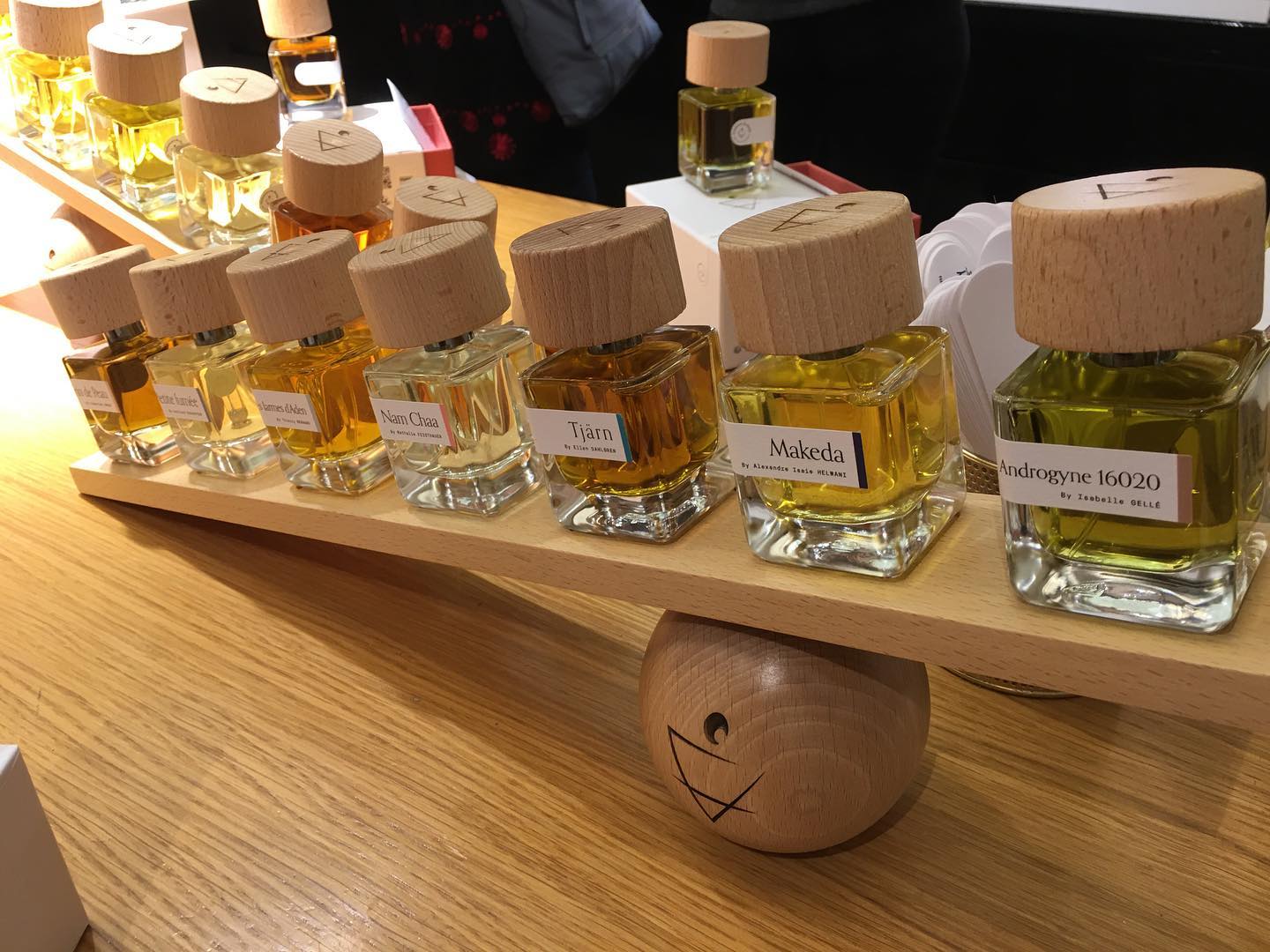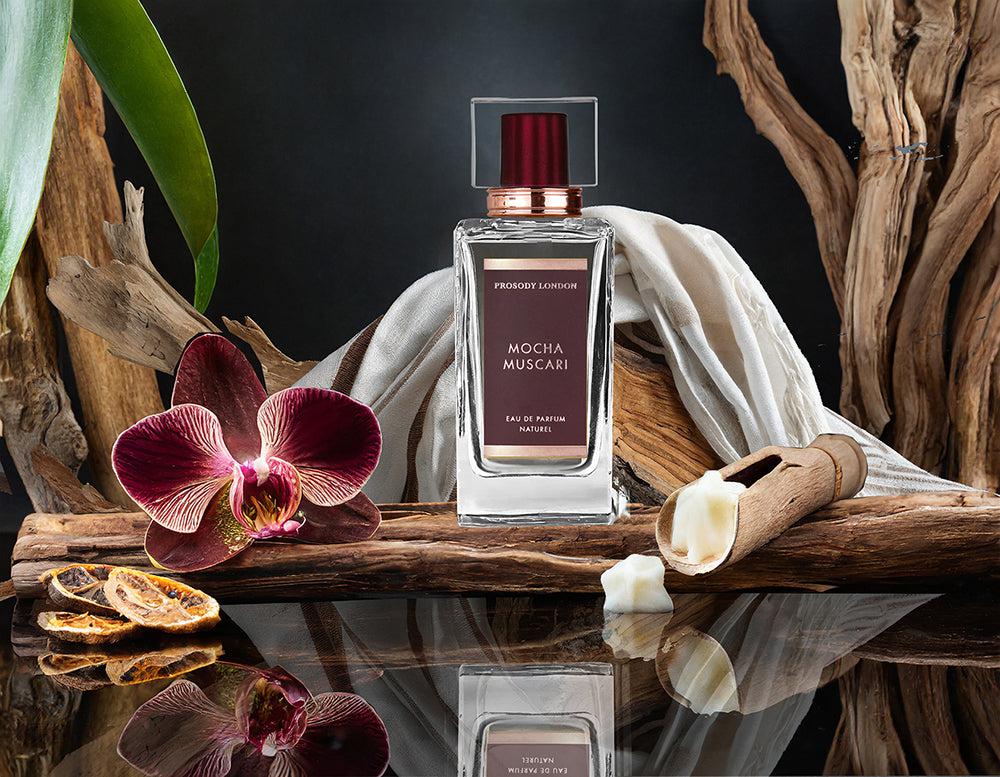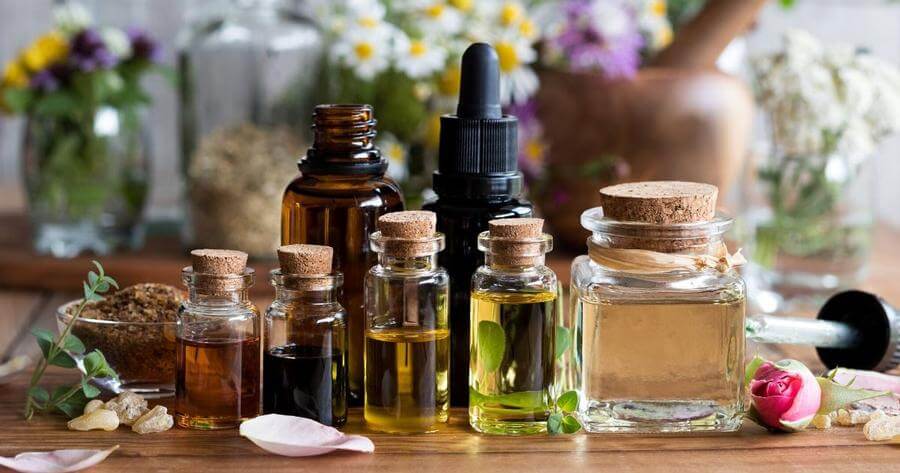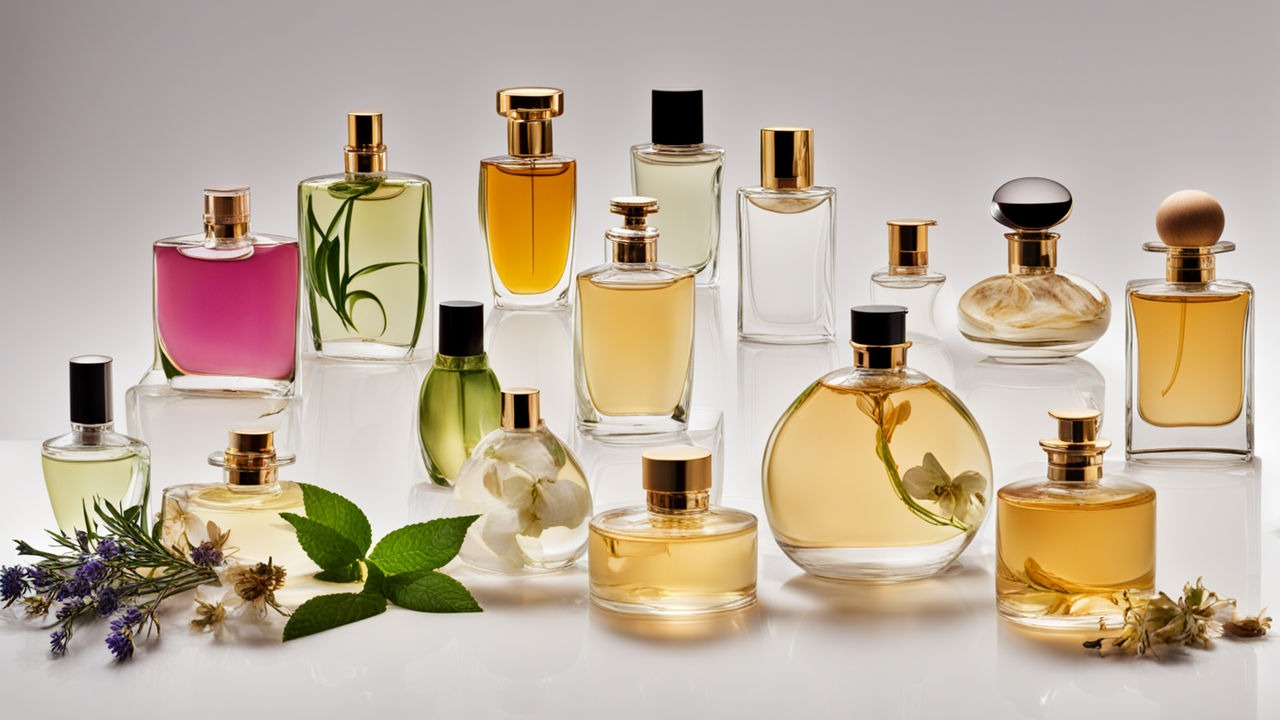Brief History of Perfume

The history of perfume dates back to ancient Mesopotamia and Egypt, where it was used in religious rituals and for personal adornment. The word “perfume” itself comes from the Latin phrase “per fumum,” meaning “through smoke,” indicative of its initial use in burning incense. As trade routes expanded, so did the popularity of perfumes, with ancient Greece and Rome becoming significant centers of fragrance culture.
During the Renaissance, perfumery flourished in Europe, particularly in Italy and France. The 17th century saw the establishment of Grasse, France, as the world’s perfume capital, where the tradition of using local flowers and herbs in fragrance production began. This era marked the beginning of perfume as a symbol of luxury and sophistication.
Evolution from Synthetic to Natural Ingredients
The industrial revolution brought significant changes to the perfume industry. The development of synthetic compounds in the late 19th century allowed perfumers to create new scents and replicate rare or endangered natural ingredients. These synthetic fragrances were more affordable and widely accessible, leading to a boom in the commercial perfume market.
However, in recent years, there has been a notable shift back to natural ingredients. This transition is driven by increasing consumer awareness about the potential health risks of synthetic chemicals and a growing preference for eco-friendly and sustainable products. Natural perfumes, crafted from essential oils, plant extracts, and other organic materials, offer a more authentic and environmentally conscious alternative to their synthetic counterparts.
The revival of natural perfumery reflects a broader trend towards wellness and clean beauty, where consumers seek products that align with their values of health, sustainability, and ethical sourcing. As the demand for natural perfumes continues to rise, the industry is witnessing a renaissance of artisanal craftsmanship and a renewed appreciation for the beauty of nature’s scents.
What Are Natural Perfumes?

Natural perfumes are fragrances crafted exclusively from natural ingredients derived from plants, flowers, fruits, and other organic sources. Unlike synthetic perfumes, which are created using man-made chemicals, natural perfumes are composed of essential oils, absolutes, resins, and other botanicals that offer a pure and authentic scent experience.
Definition and Characteristics
Natural perfumes are defined by their use of ingredients that are minimally processed and free from synthetic compounds. These perfumes harness the aromatic properties of nature, capturing the essence of flowers, herbs, spices, and woods in their most natural form. The ingredients used in natural perfumes are typically extracted through processes like steam distillation, cold pressing, or solvent extraction, ensuring the preservation of their natural integrity.
One of the defining characteristics of natural perfumes is their complexity and richness. Each ingredient contributes its unique aroma, resulting in a multifaceted scent profile that evolves over time. Unlike synthetic fragrances, which often rely on a stable blend of chemicals to maintain a consistent scent, natural perfumes can change subtly as they interact with the wearer’s skin and the surrounding environment. This dynamic nature adds to their charm and individuality.
Explanation of Natural Ingredients
Natural perfumes are composed of a variety of botanical ingredients, each selected for its distinct aromatic qualities. Essential oils, the cornerstone of natural perfumery, are concentrated extracts obtained from plants. For instance, lavender oil is known for its calming floral notes, while sandalwood oil provides a warm, woody aroma. Other common natural ingredients include citrus oils, like bergamot and lemon, which add a fresh and vibrant character, and floral absolutes, such as rose and jasmine, which lend a rich, opulent fragrance.
Resins and balsams, like frankincense and myrrh, are also prized in natural perfumery for their deep, resinous scents and fixative properties, which help to anchor the lighter top notes. Additionally, spices such as cinnamon and clove add warmth and complexity, creating a well-rounded and harmonious scent.
Comparison with Synthetic Perfumes
The primary distinction between natural and synthetic perfumes lies in their composition. Synthetic perfumes are created using artificial chemicals that mimic natural scents. These synthetic compounds offer consistency, longevity, and the ability to create scents that may not be possible with natural ingredients alone. However, they can also contain allergens and irritants, and their production often involves petrochemicals, which raise environmental and health concerns.
Natural perfumes, on the other hand, are celebrated for their purity and the absence of synthetic additives. They are generally considered safer for sensitive skin and less likely to cause allergic reactions. Furthermore, the use of sustainable and ethically sourced ingredients in natural perfumery aligns with the growing consumer demand for eco-friendly products.
While synthetic perfumes can offer bold and long-lasting fragrances, natural perfumes provide a more nuanced and intimate scent experience. The wearer’s body chemistry plays a significant role in how the fragrance develops, making each natural perfume unique to the individual. This personalized touch, combined with the appeal of natural and sustainable ingredients, has contributed to the rising popularity of natural perfumes in the modern fragrance market.

The Benefits of Natural Perfumes
Natural perfumes offer a host of benefits that extend beyond their captivating scents. These benefits encompass both health and environmental advantages, making them a preferred choice for many consumers seeking a more conscious and holistic approach to fragrance.
Health and Environmental Advantages
Natural perfumes are not only a treat for the senses but also a safer and more sustainable option compared to their synthetic counterparts. The shift towards natural ingredients reflects a growing awareness of health and environmental issues associated with conventional perfumes.
Non-toxic and Hypoallergenic Properties
One of the most significant benefits of natural perfumes is their non-toxic nature. Traditional synthetic perfumes often contain a cocktail of artificial chemicals, some of which can be harmful to health. Ingredients such as phthalates, parabens, and synthetic musks have been linked to various health concerns, including hormone disruption and allergic reactions.
In contrast, natural perfumes are made from pure botanical extracts and essential oils, which are free from these harmful chemicals. This makes them a safer alternative, especially for individuals with sensitive skin or those prone to allergies. The hypoallergenic properties of natural perfumes mean they are less likely to cause skin irritations or respiratory issues, providing a gentler option for everyday wear.
Eco-friendly Production and Sustainability
The environmental impact of perfume production is another critical consideration. The production of synthetic fragrances often involves petrochemicals, which contribute to pollution and environmental degradation. Additionally, the disposal of synthetic perfumes can lead to chemical residues entering waterways and soil, further harming ecosystems.
Natural perfumes, on the other hand, are crafted using sustainable and eco-friendly practices. The extraction of essential oils and other botanical ingredients typically involves environmentally responsible methods such as steam distillation or cold pressing. These processes minimize the use of harmful chemicals and reduce the overall carbon footprint.
Furthermore, many natural perfume brands prioritize ethical sourcing and sustainability. This includes using organic and wildcrafted ingredients, supporting fair trade practices, and ensuring that their supply chains do not exploit workers or deplete natural resources. By choosing natural perfumes, consumers can support these positive initiatives and contribute to a more sustainable and ethical beauty industry.
The packaging of natural perfumes also tends to be more environmentally conscious. Brands often use recyclable materials and avoid excessive packaging, further reducing their environmental impact.
Key Ingredients in Natural Perfumes
Natural perfumes are celebrated for their rich and complex aromas, which are derived from a variety of natural ingredients. These ingredients include essential oils, plant-based extracts, and absolutes, each contributing unique characteristics to the final fragrance.
Popular Natural Ingredients
Natural perfumes rely on the pure essence of nature to create captivating scents. The following are some of the most commonly used natural ingredients in perfumery, each offering distinct aromatic qualities and benefits.
Essential Oils
Essential oils are the cornerstone of natural perfumery. These highly concentrated oils are extracted from various parts of plants, including flowers, leaves, bark, and roots. They capture the true essence of the plant, offering a potent and pure aroma.
- Lavender Oil: Known for its soothing and calming properties, lavender oil has a sweet, floral scent with a hint of herbaceousness. It is often used in perfumes for its relaxing and balancing effects.
- Rose Oil: One of the most luxurious and prized essential oils, rose oil is extracted from the petals of roses. It has a rich, sweet, and floral fragrance that adds a romantic and elegant touch to perfumes.
- Sandalwood Oil: This essential oil is derived from the wood of sandalwood trees. It has a warm, woody, and creamy scent that provides a grounding and meditative quality to fragrances. Sandalwood oil is also known for its longevity and ability to act as a fixative, helping to anchor other scents in a perfume.
Plant-based Extracts and Absolutes
In addition to essential oils, natural perfumes also incorporate plant-based extracts and absolutes. These ingredients are extracted using methods that preserve the intricate and delicate scents of the plants.
- Jasmine Absolute: Extracted from jasmine flowers, this absolute is renowned for its rich, sweet, and intoxicating floral aroma. Jasmine adds depth and sensuality to perfumes, making it a favorite in luxury fragrances.
- Vanilla Extract: Obtained from the pods of the vanilla orchid, vanilla extract has a warm, creamy, and sweet scent. It adds a comforting and gourmand quality to perfumes, often used to soften and harmonize other notes.
- Citrus Extracts: Extracts from citrus fruits like bergamot, lemon, and orange are commonly used in natural perfumes for their fresh, vibrant, and uplifting scents. These ingredients add a sparkling top note that enlivens the overall fragrance.

The Craftsmanship Behind Natural Perfumes
Natural perfumes are not just about the ingredients; they are also about the artistry and craftsmanship involved in their creation. The process of making natural perfumes is a meticulous and passionate endeavor that combines traditional methods with modern techniques, often resulting in small batch production and hand-blending to ensure the highest quality.
Artisanal Production Process
Crafting natural perfumes is an art that requires a deep understanding of botanical ingredients and their aromatic properties. Perfumers, also known as “noses,” must possess a refined sense of smell and a creative vision to blend these ingredients into harmonious compositions. This artisanal approach differentiates natural perfumes from their mass-produced synthetic counterparts, offering a unique and intimate fragrance experience.
Traditional Methods vs. Modern Techniques
The production of natural perfumes involves both time-honored traditions and innovative modern methods. Traditional techniques, such as steam distillation and cold pressing, have been used for centuries to extract essential oils and other aromatic compounds from plants. These methods are cherished for their ability to capture the pure essence of the ingredients without altering their natural properties.
- Steam Distillation: This process involves passing steam through plant material to vaporize the volatile compounds. The steam is then condensed, and the essential oil is separated from the water. Steam distillation is commonly used for extracting oils from flowers, leaves, and herbs.
- Cold Pressing: Used primarily for citrus fruits, cold pressing involves mechanically pressing the peels to release their fragrant oils. This method preserves the bright, fresh scents of citrus essential oils.
Modern techniques, such as CO2 extraction and solvent extraction, have also been adopted to enhance the quality and variety of natural perfumes. These methods allow for the extraction of delicate and heat-sensitive compounds that traditional methods might miss.
- CO2 Extraction: This method uses carbon dioxide under high pressure and low temperature to extract essential oils. CO2 extraction is highly efficient and produces oils with a more complete aromatic profile, closely resembling the original plant.
- Solvent Extraction: Solvent extraction involves using a solvent to dissolve the aromatic compounds, which are then separated and purified. This method is often used to produce absolutes, which are highly concentrated and richly aromatic.
Small Batch Production and Hand-blending
One of the hallmarks of natural perfumery is the commitment to small batch production and hand-blending. Unlike mass-produced synthetic perfumes, natural perfumes are often made in limited quantities to ensure attention to detail and quality control. Each batch is carefully crafted to maintain consistency and integrity, with a focus on the unique characteristics of the natural ingredients.
Hand-blending is a labor-intensive process that allows perfumers to adjust and refine their creations with precision. This hands-on approach ensures that each perfume is a unique masterpiece, with subtle variations that reflect the natural fluctuations in the raw materials. The result is a fragrance that feels personal and exclusive, with a depth and complexity that mass-produced perfumes cannot replicate.
Market Trends and Consumer Preferences
The fragrance industry is experiencing a significant transformation as market trends shift towards more natural and health-conscious products. This change is largely driven by growing consumer demand for natural scents, increased awareness of wellness and clean beauty, and a broader understanding of the ingredients used in perfumes.
Growing Demand for Natural Scents
In recent years, there has been a noticeable increase in the popularity of natural fragrances. Consumers are becoming more discerning about what they apply to their bodies, seeking out perfume brands that prioritize transparency and use high-quality, natural ingredients. The allure of natural scents lies in their purity and connection to nature, offering a more authentic and holistic sensory experience.
Shift Towards Wellness and Clean Beauty
The shift towards wellness and clean beauty has had a profound impact on the perfume industry. As people become more health-conscious, they are moving away from synthetic ingredients in favor of more natural alternatives. This trend is not only about avoiding harmful chemicals but also about embracing products that promote overall well-being. Natural fragrances, free from potentially toxic synthetic compounds, are seen as a safer and more mindful choice.
Perfume brands are responding to this demand by developing lines of natural fragrances that align with the principles of clean beauty. These products often highlight their use of essential oils and botanical extracts, emphasizing their natural origins and health benefits. Additionally, the concept of safe synthetics is gaining traction, where synthetic ingredients that have been rigorously tested for safety and environmental impact are used to complement natural formulations without compromising on health.
Consumer Awareness and Education
Consumer awareness and education play a crucial role in the growing preference for natural perfumes. With the rise of the internet and social media, information about the potential risks of synthetic ingredients in fragrances has become more accessible. Consumers are now more informed about the differences between natural fragrance oils and synthetic counterparts, and they are seeking out brands that are transparent about their ingredient sourcing and production practices.
Educational initiatives by perfume brands and industry advocates are also helping to bridge the knowledge gap. Workshops, online courses, and informative content about the benefits of natural fragrances and the risks associated with synthetic ingredients are empowering consumers to make better choices. This increased awareness is driving demand for products that are not only effective and pleasant but also safe and environmentally friendly.
